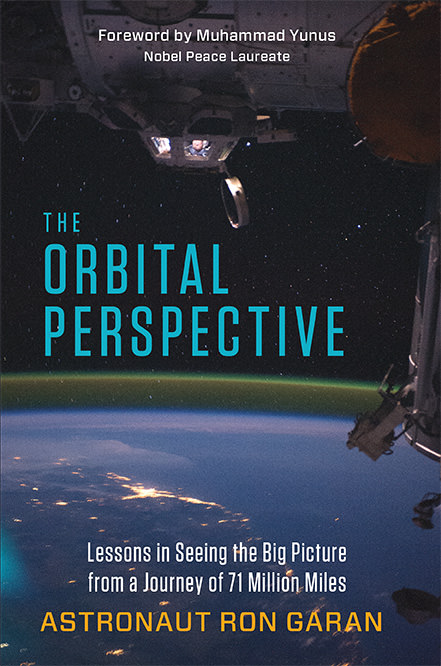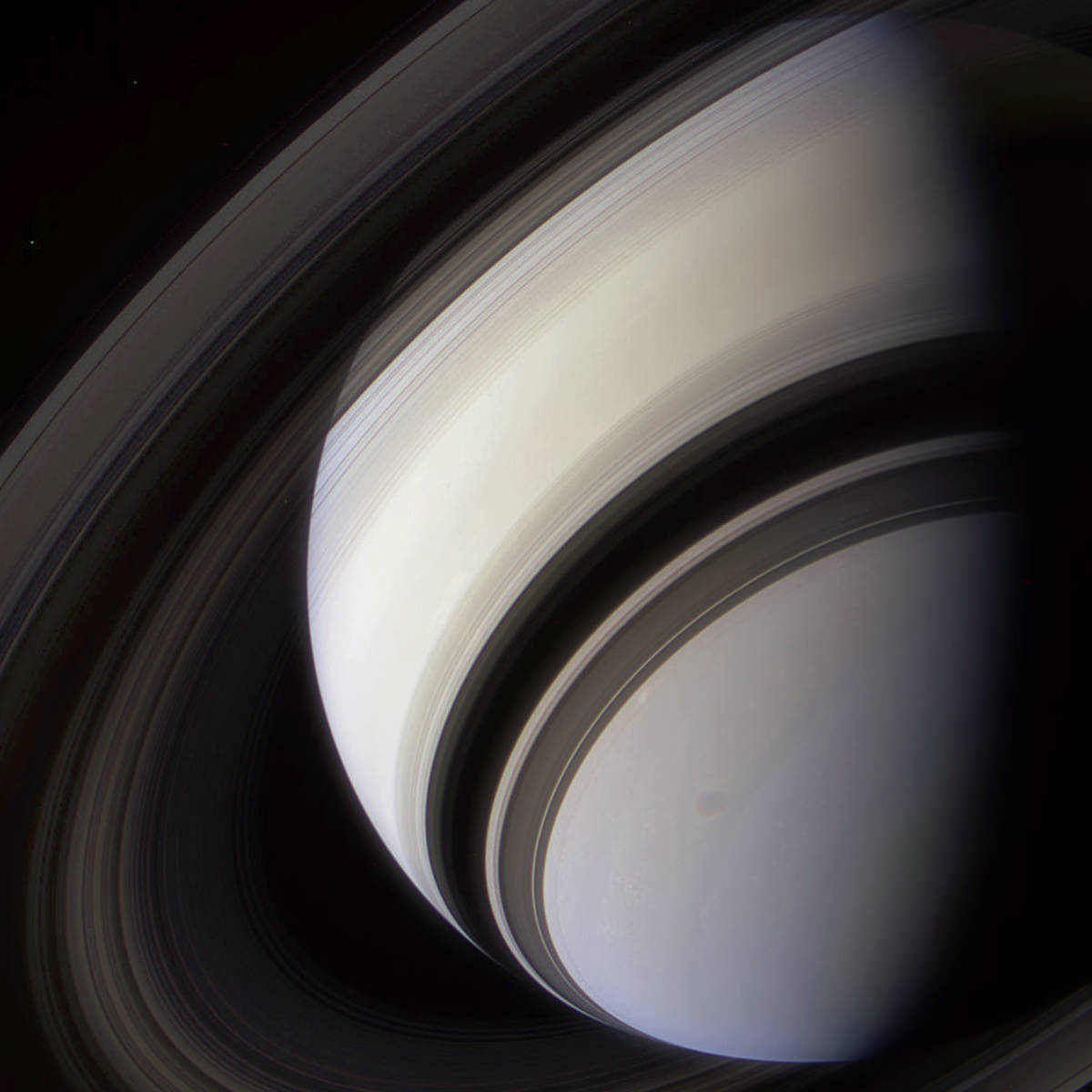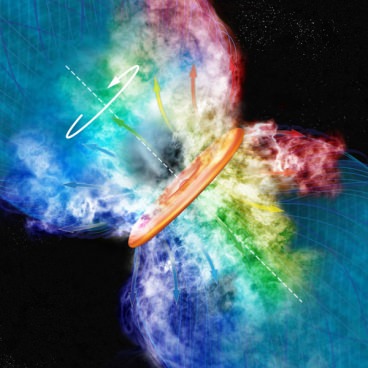Black holes seem to provide endless fascination to astronomers. This is at least partly due to the extreme physics that takes place in and around them, but sometimes, it might harken back to cultural touchpoints that made them interested in astronomy in the first place. That seems to be the case for the authors of a new paper on the movement of jets coming out of black holes. Dubbing them “Death Star” black holes, researchers used data from the Very Long Baseline Array (VLBA) and the Chandra X-ray Observatory to look at where these black holes fired jets of superheated particles. And over time the found they did something the fiction Death Star could also do – move.
Continue reading “Black Holes are Firing Beams of Particles, Changing Targets Over Time”A Green Bank Telescope Prototype Radar System Can Image the Moon in High-Resolution and Detect Asteroids

Everyone loves taking pictures of the Moon. Whether it’s with their phones or through the wonders of astrophotography, photographing the Moon reminds us about the wonders and awesomeness of the universe. But while we can take awesome images of the whole Moon from the Earth, it’s extremely difficult to get close-up images of its surface given the enormous distance we are from our nearest celestial neighbor at 384,400 km (238,855 mi). This is because the closer we try to zoom in on its surface, the blurrier, or more pixelated, the images become. Essentially, the resolution of the images becomes worse and worse. But what if we could take high-resolution images of the Moon’s surface from Earth instead of relying on satellites presently in lunar orbit to take them for us?
Continue reading “A Green Bank Telescope Prototype Radar System Can Image the Moon in High-Resolution and Detect Asteroids”Astronomers Start Mapping the Structure of the Far Side of the Milky Way
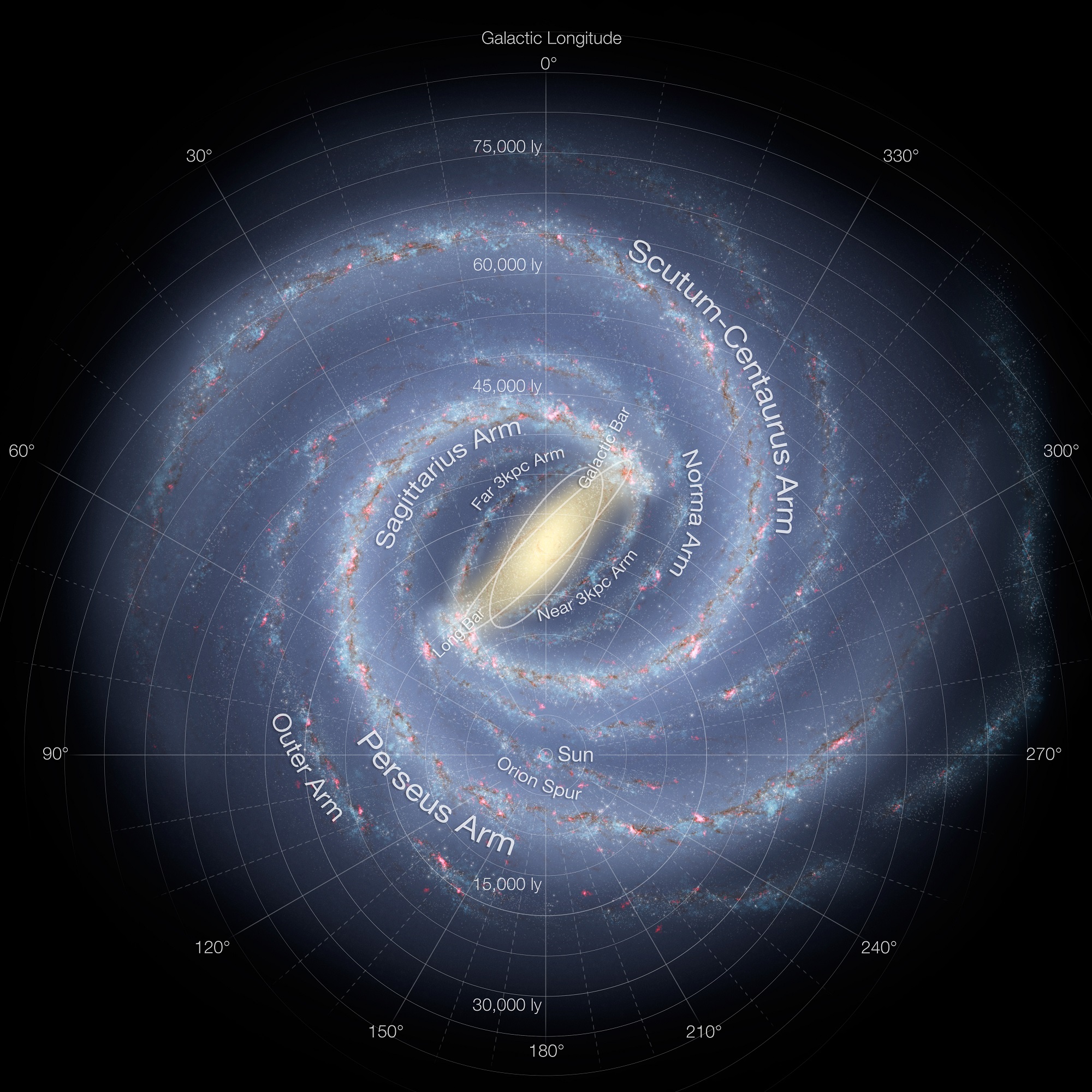
Since the 18th century, astronomers have been aware that our Solar System is embedded in a vast disk of stars and gas known as the Milky Way Galaxy. Since that time, the greatest scientific minds have been attempting to obtain accurate distance measurements in order to determine just how large the Milky Way is. This has been no easy task, since the fact that we are embedded in our galaxy’s disk means that we cannot view it head-on.
But thanks to a time-tested technique called trigonometric parallax, a team of astronomers from the Max Planck Institute for Radio Astronomy (MPIfR) in Bonn, Germany, and the Harvard-Smithsonian Center for Astrophysics (CfA) were recently able to directly measure the distance to the opposite side of the Milky Way Galaxy. Aside from being an historic first, this feat has nearly doubled the previous record for distance measurements within our galaxy.
The study which described this accomplishment, titled “Mapping Spiral Structure on the far side of the Milky Way“, recently appeared in the journal Science. Led by Alberto Sanna, a researcher from the Max Planck Institute for Radio Astronomy, the team consulted data from the National Radio Astronomy Observatory’s Very Long Baseline Array (VLBA) to determine the distance to a star-forming region on the other side of our galaxy.
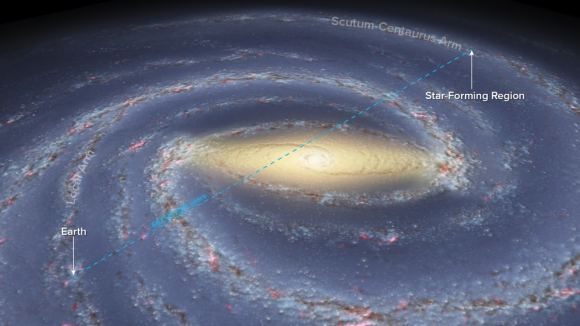
To do this, the team relied on a technique first applied by Freidrich Wilhelm Bessel in 1838 to measure the distance to the star 61 Cygni. Known as trigonometric parallax, this technique involves viewing an object from opposite sides of the Earth’s orbit around the Sun, and then measuring the angle of the object’s apparent shift in position. In this way, astronomers are able to use simple trigonometry to calculate the distance to that object.
In short, the smaller the measured angle, the greater the distance to the object. These measurements were performed using data from the Bar and Spiral Structure Legacy (BeSSeL) Survey, which was named in honor of Freidrich Wilhelm Bessel. But whereas Bessel and his contemporaries were forced to measure parallax using basic instruments, the VLBA has ten dish antennas distributed across North America, Hawaii, and the Caribbean.
With such an array at its disposal, the VLBA is capable of measuring parallaxes with one thousand times the accuracy of those performed by astronomers in Bessel’s time. And rather than being confined to nearby star systems, the VLBA is capable of measuring the minuscule angles associated with vast cosmological distances. As Sanna explained in a recent MPIfR press release:
“Using the VLBA, we now can accurately map the whole extent of our Galaxy. Most of the stars and gas in our Galaxy are within this newly-measured distance from the Sun. With the VLBA, we now have the capability to measure enough distances to accurately trace the Galaxy’s spiral arms and learn their true shapes.”

The VLBA observations, which were conducted in 2014 and 2015, measured the distance to the star-forming region known as G007.47+00.05. Like all star-forming regions, this one contains molecules of water and methanol, which act as natural amplifiers of radio signals. This results in masers (the radio-wave equivalent of lasers), an effect that makes the radio signals appear bright and readily observable with radio telescopes.
This particular region is located over 66,000 light years from Earth and at on opposite side of the Milky Way, relative to our Solar System. The previous record for a parallax measurement was about 36,000 light-years, roughly 11,000 light years farther than the distance between our Solar System and the center of our galaxy. As Sanna explained, this accomplishment in radio astronomy will enable surveys that reach much farther than previous ones:
“Most of the stars and gas in our Galaxy are within this newly-measured distance from the Sun. With the VLBA, we now have the capability to measure enough distances to accurately trace the Galaxy’s spiral arms and learn their true shapes.”
Hundreds of star-forming regions exist within the Milky Way. But as Karl Menten – a member of the MPIfR and a co-author on the study – explained, this study was significant because of where this one is located. “So we have plenty of ‘mileposts’ to use for our mapping project,” he said. “But this one is special: Looking all the way through the Milky Way, past its center, way out into the other side.”
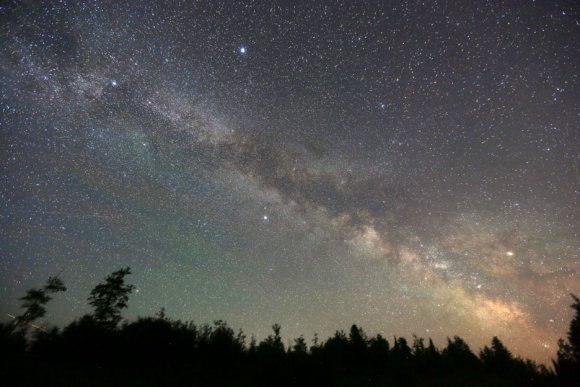
In the coming years, Sanna and his colleagues hope to conduct additional observations of G007.47+00.05 and other distant star-forming regions of the Milky Way. Ultimately, the goal is to gain a complete understanding of our galaxy, one that is so accurate that scientists will be able to finally place precise constraints on its size, mass, and its total number of stars.
With the necessary tools now in hand, Sanna and his team even estimate that a complete picture of the Milky Way could be available in about ten years time. Imagine that! Future generations will be able to study the Milky Way with the same ease as one that is located nearby, and which they can view edge-on. At long last, all those artist’s impression of our Milky Way will be to scale!
Weekly Space Hangout – Feb. 6, 2015: Astronaut Ron Garan’s “Orbital Perspective”
Host: Fraser Cain (@fcain)
Guests:
Morgan Rehnberg (cosmicchatter.org / @MorganRehnberg )
Special Guest: Astronaut Ron Garan (orbitalpersepctive.com / @Astro_Ron)
Ron will talk about his new book The Orbital Perspective: Lessons in Seeing the Big Picture from a Journey of 71 Million Miles.
This Week’s Stories:
Obama’s NASA budget request
Black Holes Do Not Exist Where Space and Time Do Not Exist, Says New Theory
SES Rethinking Being First to Fly on a Full-Throttle Falcon 9
5 Lunar X-Prize Teams Land Payday; Only 2 Landed Hardware
Moroccan Meteorite May Be a 4.4-Billion-Year-Old Chunk of Martian Crust
After Canceling NRO Launch Competition, USAF Dangles More Plums for SpaceX
Where is Saturn? VLBA Used to Accurately Measure Position of Saturn and its 62 Moons
SpaceX Nears Pad Abort Test for Human-Rated Dragon Capsule
Closer Look at the IXV Intermediate eXperimental Vehicle
Skylon Spaceplane’s Inventor Sees Busy Spaceports Coming Soon
SpaceX Conducts Static Fire Test Ahead of DSCOVR Mission
Supernova Mystery Found at the Bottom of the Sea
NASA Does an About Face on SOFIA: Requests Full Funding
LightSail Test Flight Scheduled for May 2015
Mining the Moon Becomes a Serious Prospect
TWiM: NASA Presses Congress for More Commercial Crew Funding
A Second Ringed Centaur? Centaurs with Rings Could Be Common
Rosetta Swoops In for a Close Encounter
Super Sizing Pegasus for SLS Core Transport
TWiM: SpaceX Drone Boats Named After Sci-Fi Legend’s Spaceships
It’s Official: We’re On the Way to Europa
McCain Accuses USAF of “Actively Keeping Out” SpaceX
Europe Tired of Playing “Simon Says” with SpaceX
Business on the Moon: FAA Backs Bigelow Aerospace
Mystery of the Universe’s Gamma-Ray Glow May Be Solved
New Infrared View of the Trifid Nebula Reveals New Variable Stars Far Beyond
Gap Reveals Potential Exomoon
We record the Weekly Space Hangout every Friday at 12:00 pm Pacific / 3:00 pm Eastern. You can watch us live on Google+, Universe Today, or the Universe Today YouTube page.
You can join in the discussion between episodes over at our Weekly Space Hangout Crew group in G+, and suggest your ideas for stories we can discuss each week!
How NASA Is Saving Fuel On Its Outer Solar System Missions
While Saturn is far away from us, scientists have just found a way to make the journey there easier. A new technique pinpointed the position of the ringed gas giant to within just two miles (four kilometers).
It’s an impressive technological feat that will improve spacecraft navigation and also help us better understand the orbits of the outer planets, the Jet Propulsion Laboratory (JPL) said.
It’s remarkable how much there is to learn about Saturn’s position given that the ancients discovered it, and it’s easily visible with the naked eye. That said, the new measurements with the Cassini spacecraft and the Very Long Baseline Array radio telescope array are 50 times more precise than previous measurements with telescopes on the ground.
“This work is a great step toward tying together our understanding of the orbits of the outer planets of our solar system and those of the inner planets,” stated study leader Dayton Jones of JPL.

What’s even more interesting is scientists have been using the better information as it comes in. Cassini began using the improved method in 2013 to improve its precision when it fires its engines.
This, in the long term, leads to fuel savings — allowing the spacecraft a better chance of surviving through the end of its latest mission extension, which currently is 2017. (It’s been orbiting Saturn since 2004.)
The technique is so successful that NASA plans to use the same method for the Juno spacecraft, which is en route to Jupiter for a 2016 arrival.
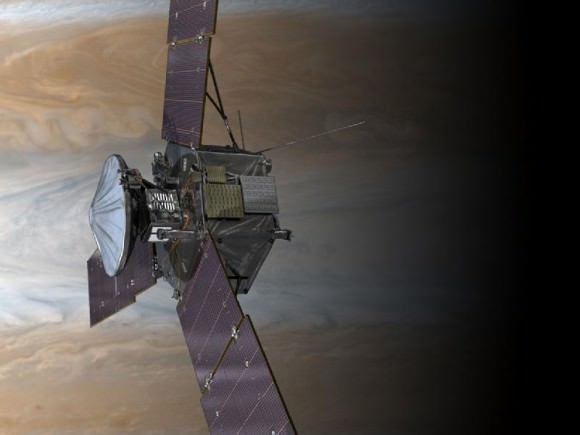
Scientists are excited about Cassini’s mission right now because it is allowing them to observe the planet and its moons as it reaches the summer solstice of its 29-year orbit.
This could, for example, provide information on how the climate of the moon Titan changes — particularly with regard to its atmosphere and ethane/methane-riddled seas, both believed to be huge influencers for the moon’s temperature.
Beyond the practical applications, the improved measurements of Saturn and Cassini’s position are also giving scientists more insight into Albert Einstein’s theory of general relatively, JPL stated. They are taking the same techniques and applying them to observing quasars — black-hole powered galaxies — when Saturn passes in front of them from the viewpoint of Earth.
Source: Jet Propulsion Laboratory
Our Place in the Galactic Neighborhood Just Got an Upgrade
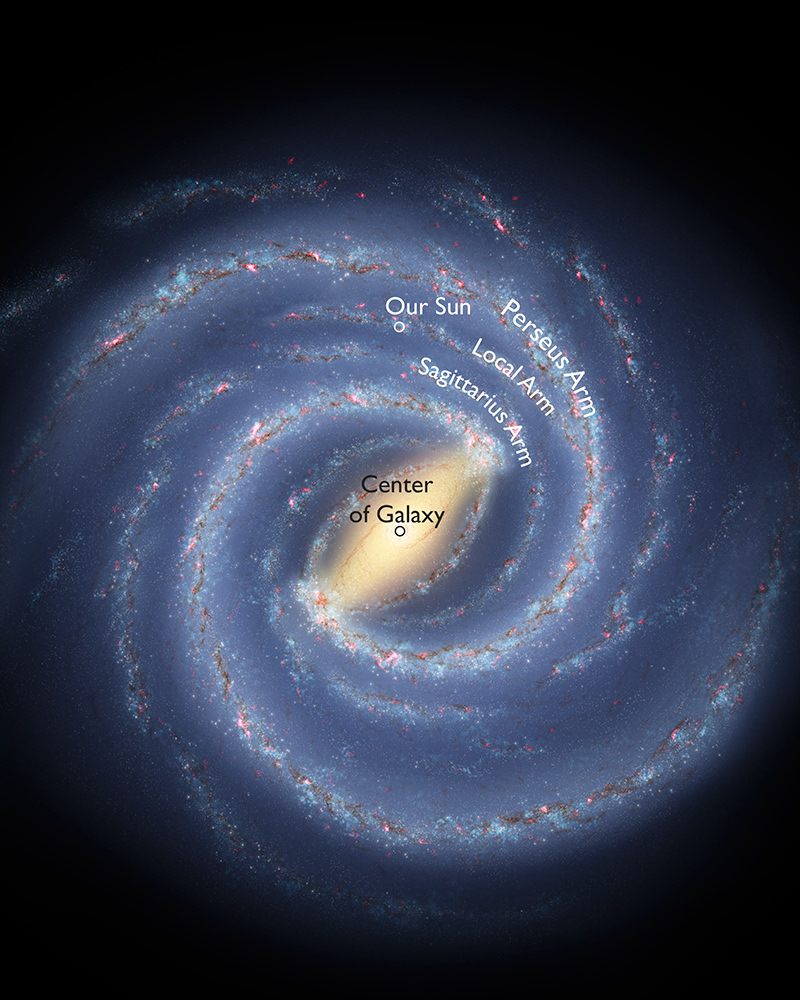
Some cultures used to say the Earth was the center of the Universe. But in a series of “great demotions,” as astronomer Carl Sagan put it in his book Pale Blue Dot, we found out that we are quite far from the center of anything. The Sun holds the prominent center position in the center of the Solar System, but our star is just average-sized, located in a pedestrian starry suburb — a smaller galactic arm, far from the center of the Milky Way Galaxy.
But perhaps our suburb isn’t as quiet or lowly as we thought. A new model examining the Milky Way’s structure says our “Local Arm” of stars is more prominent than we believed.
“We’ve found there is not a lot of difference between our Local Arm and the other prominent arms of the Milky Way, which is in contrast what astronomers thought before,” said researcher Alberto Sanna, of the Max-Planck Institute for Radio Astronomy, speaking today at the American Astronomical Society’s annual meeting in Indianapolis, Indiana.
Sanna said that one of the main questions in astronomy is how the Milky Way would appear to an observer outside our galaxy.
If you imagine the Milky Way as a rippled cookie, our star is in a neighborhood in between two big ripples (the Sagittarius Arm and the Perseus Arm). Before, we thought the Local Arm (or Orion Arm) was just a small spur between the arms. New research using trigonometric parallax measurements, however, suggests the Local Arm could be a “significant branch” of one of those two arms.
In a few words, our stellar neighborhood is a bigger and brighter one than we thought it was.
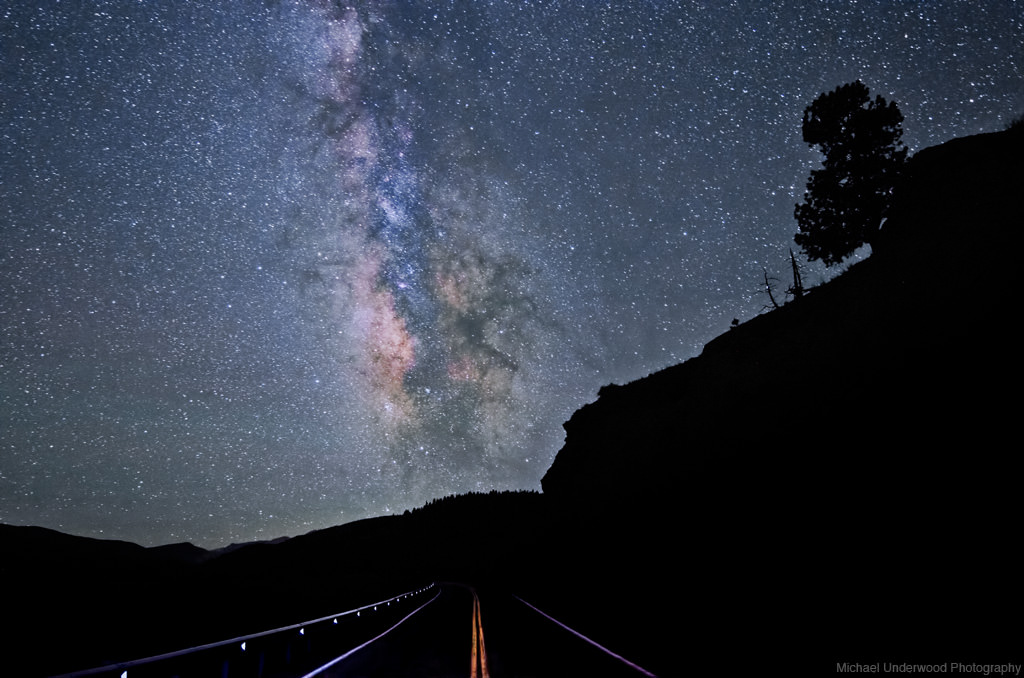
As part of the BeSSeL Survey (Bar and Spiral Structure Legacy Survey) using the Very Long Baseline Array (VLBA), astronomers are able to make more precise measurements of cosmic distances. The VLBA uses a network of 10 telescopes that work together to figure out how far away stars and other objects are.
It’s hard to figure out the distance from the Earth to other stars. Generally, astronomers use a technique called parallax, which measures how much a star moves when we look at it from the Earth.

When our planet is at opposite sites of its orbit — in spring and fall, for example — the apparent location of stellar objects changes slightly.
The more precisely we can measure this change, the better a sense we have of a star’s distance.
The VLBA undertook a search for spots in our galaxy where water and methanol molecules (also known as masers) enhance radio waves — similar to how lasers strengthen light waves. Masers are like stellar lighthouses for radio telescopes, the National Radio Astronomy Observatory stated.
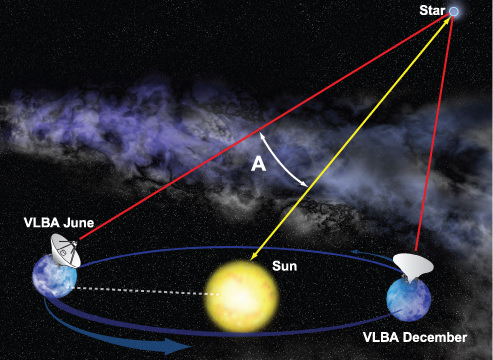
Between 2008 and 2012, the VLBA tracked the distances to (and movements of) several masers to higher precision than previously, leading to the new findings.
Will the findings help ease our “inferiority complex” after all those great demotions?
“I would say yes, that’s a nice conclusion to say we are more important,” Sanna told Universe Today. “But more importantly, we are now mapping the Milky Way and discovering how the Milky Might appear to an outside observer. We now know the Local Arm arm is something that an observer from afar would definitely notice!”
The results will be published in the Astrophysical Journal, (preprint available here) and were presented today (June 3) at the AAS meeting.
Extreme Telescopes: Unique Observatories Around the World
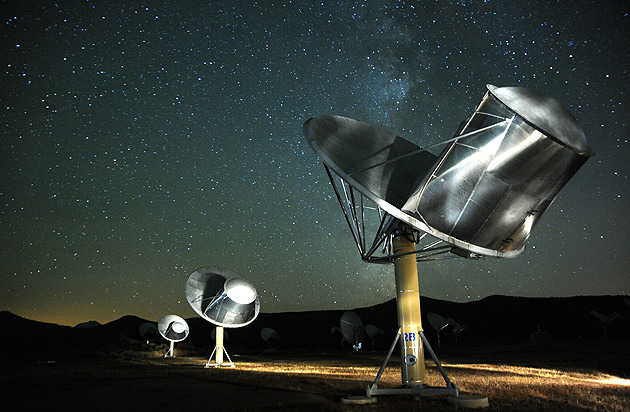
In 1888, astronomer Simon Newcomb uttered now infamous words, stating that “We are probably nearing the limit of all we can know about astronomy.” This was an age just prior to identifying faint nebulae as separate galaxies, Einstein’s theory of special and general relativity, and an era when a hypothetical substance called the aether was said to permeate the cosmos.
Newcomb would scarcely recognize astronomy today. Modern observatories span the electromagnetic spectrum and are unlocking the secrets of a universe both weird and wonderful. Modern day astronomers rarely peer through an eyepiece, were it even possible to do so with such bizarre instruments. What follows are some of the most unique professional ground-based observatories in operation today that are pushing back our understanding of the universe we inhabit.
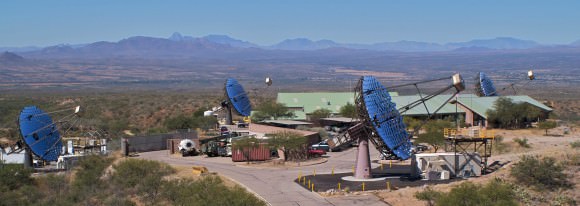
VERITAS: Based at the Fred Lawrence Whipple Observatory in southern Arizona, the Very Energetic Radiation Imaging Telescope Array System (VERITAS) is an observatory designed to observe high energy gamma-rays. Its array consists of four 12-metre aperture reflectors each comprised of 350 mirror scintillators. Each VERITAS array has a 3.5° degree field of view and the array has been fully operational since 2007. VERITAS has been used to study active galactic nuclei, gamma-ray bursts, and the Crab Nebula pulsar.
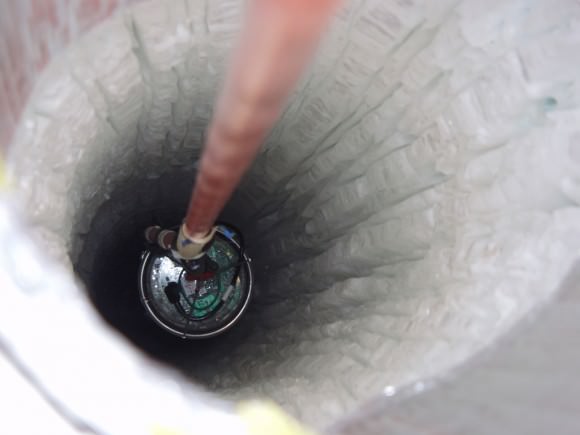
IceCube: Not the rapper, IceCube is a neutrino detector in based at the Amundsen-Scott South Pole Station in Antarctica. IceCube watches for neutrino interactions by use of thousands of photomultipliers suspended up to 2.45 kilometres down into the Antarctic ice sheet. With a total of 86 detector strings completed in 2011, IceCube is currently the world’s largest neutrino observatory and is part of the worldwide Supernova Early Warning System. IceCube will also complement WMAP and Planck data and can actually “see” the shadowing effect of the Moon blocking cosmic ray muons.
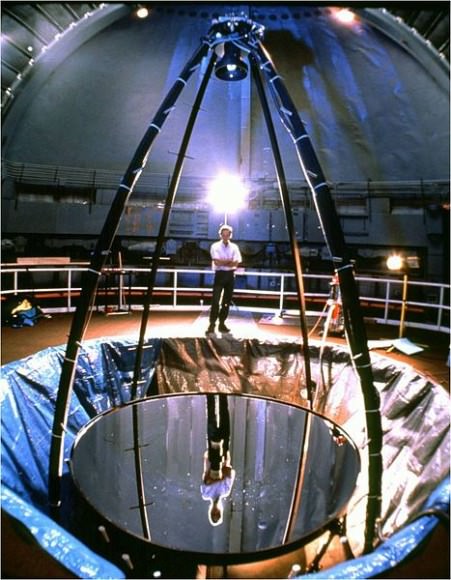
Liquid Mirror Telescopes: One of the more bizarre optical designs out there in the world of astronomy, liquid mirror telescopes employ a large rotating dish of mercury to form a parabolic mirror. The design is cost effective but does have the slight drawback of having to aim directly at the zenith while a swath of sky passes over head. NASA employed a 3-metre liquid mirror telescope as part of its Orbital Debris observatory based near Cloudcroft, New Mexico from 1995-2002. The largest one in the world (and the 18th largest optical telescope overall) is the 6-metre Large Zenith Telescope in the University of British Columbia’s Malcolm Knapp Research Forest.
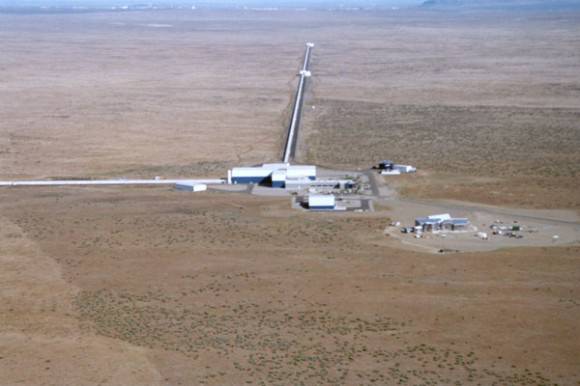
LIGO: Designed to detect incoming gravity waves caused by pulsar-black hole mergers, the Laser Interferometer Gravitational-Wave Observatory (LIGO) is comprised of a pair of facilities with one based in Hanford, Washington and another in Livingston, Louisiana. Each detector is consists of a pair of 2 kilometre Fabry-Pérot arms and measures a laser beam shot through them with ultra-high precision. Two geographically separate interferometers are needed to isolate out terrestrial interference as well as give a direction of an incoming gravity wave on the celestial sphere. To date, no gravity waves have been detected by LIGO, but said detection is expected to open up a whole new field of astronomy.
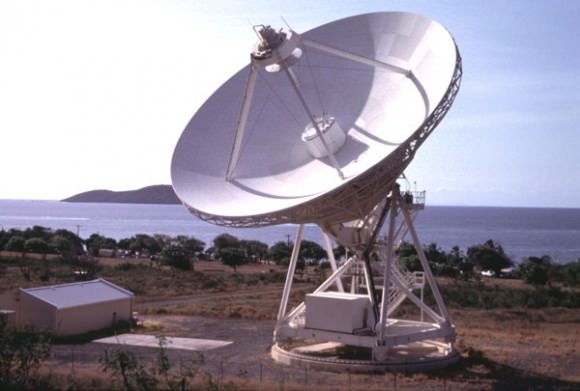
The Very Long Baseline Array: A series of 10 radio telescopes with a resolution the size of a continent, the Very Long Baseline Array (VLBA) employs observatories across the continental United States, Saint Croix in the U.S. Virgin Islands, and Mauna Kea, Hawaii. This is effectively the longest radio interferometer in the world with a baseline of over 8,600 kilometres and a resolution of under one milliarcseconds at 4 to 0.7 centimetre wavelengths. The VLBA has been used to study H2O megamasers in Active Galactic Nuclei and measure ultra-precise positions and proper motions of stars and galaxies.
LOFAR: Located just north of the town of Exloo in the Netherlands, The LOw Frequency Radio Array is a phased array 25,000 antennas with an effective collection area of 300,000 square metres. This makes LOFAR one of the largest single connected radio telescopes in existence. LOFAR is also a proof on concept for its eventual successor, the Square Kilometre Array to be built jointly in South Africa, Australia & New Zealand. Key projects involving LOFAR include extragalactic surveys, research into the nature of cosmic rays and studies of space weather.
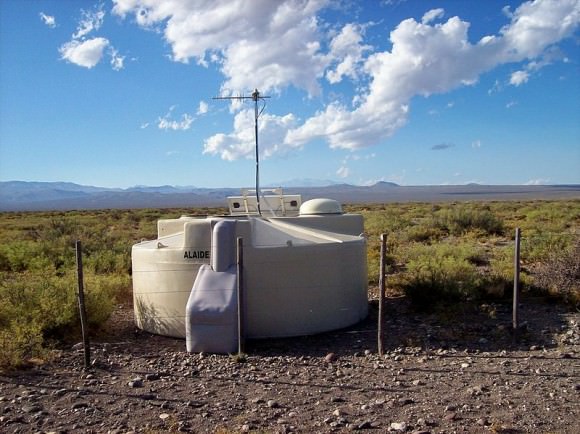
The Pierre Auger Observatory: A cosmic ray observatory located in Malargüe, Argentina, the Pierre Auger Observatory was completed in 2008. This unique instrument consists of 1600 water tank Cherenkov radiation detectors spaced out over 3,000 square kilometres along with four complimenting fluorescence detectors. Results from Pierre Auger have thus far included discovery of a possible link between some of the highest energy events observed and active galactic nuclei.
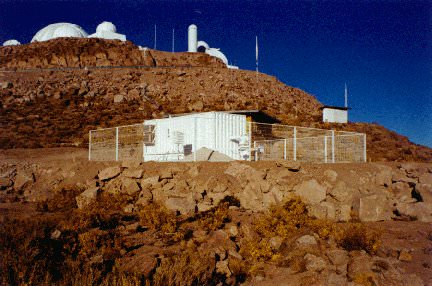
GONG: Keeping an eye on the Sun is the goal of the Global Oscillation Network Group, a worldwide network of six solar telescopes. Established from an initial survey of 15 sites in 1991, GONG provides real-time data that compliments space-based efforts to monitor the Sun by the SDO, SHO, and STEREO A & B spacecraft. GONG scientists can even monitor the solar farside by use of helioseismology!
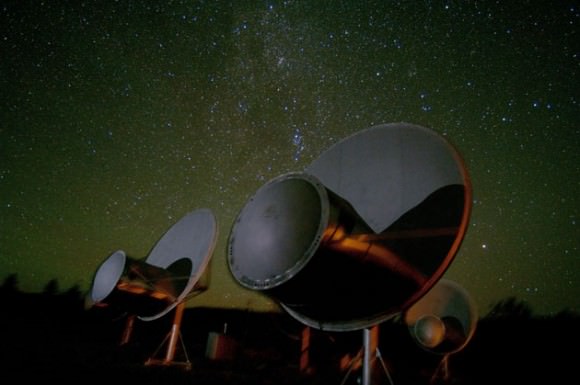
The Allen Telescope Array: Located at Hat Creek 470 kilometres northeast of San Francisco, this array will eventually consist of 350 Gregorian focus radio antennas that will support SETI’s search for extraterrestrial intelligence. 42 antennas were made operational in 2007, and a 2011 budget shortfall put the status of the array in limbo until a preliminary financing goal of $200,000 was met in August 2011.
The YBJ Cosmic Ray Observatory: Located high on the Tibetan plateau, Yangbajing International Cosmic Ray Observatory is a joint Japanese-Chinese effort. Much like Pierre-Auger, the YBJ Cosmic Ray Observatory employs scintillators spread out along with high speed cameras to watch for cosmic ray interactions. YBJ observes the sky in cosmic rays continuously and has captured sources from the Crab nebula pulsar and found a correlation between solar & interplanetary magnetic fields and the Sun’s own “cosmic ray shadow”. The KOSMA 3-metre radio telescope is also being moved from Switzerland to the YBJ observatory in Tibet.
Dodging Black Hole Bullets
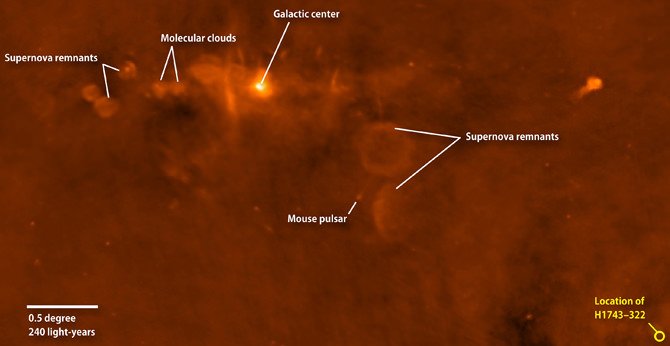
[/caption]
In mid-2009 a binary star system cataloged as H H1743–322 shot off something very unusual. Poised about 28,000 light years distant in the direction of the constellation of Scorpius, this rather ordinary system made up of a normal star and unknown mass black hole was busy exchanging mass. The pair orbits in mere days with a stream of material flowing continuously between them. This gas causes a flat accretion disk measuring millions of miles across to form and it is centered on the black hole. As the matter twirls toward the center, it becomes compressed and heats to tens of millions of degrees, spitting out X-rays… and bullets.
Utilizing data from NASA’s Rossi X-ray Timing Explorer (RXTE) satellite and the National Science Foundation’s (NSF) Very Long Baseline Array (VLBA) radio telescope, an international team of astronomers were able to confirm the moment a black hole located within our galaxy fired a super speedy clump of gas into surrounding space. Blasting forth at about one-quarter the speed of light, these “bullets” of ionized gas are hypothesized to have originated from an area just outside the black hole’s event horizon.
“Like a referee at a sports game, we essentially rewound the footage on the bullets’ progress, pinpointing when they were launched,” said Gregory Sivakoff of the University of Alberta in Canada. He presented the findings today at the American Astronomical Society meeting in Austin, Texas. “With the unique capabilities of RXTE and the VLBA, we can associate their ejection with changes that likely signaled the start of the process.”
As we have learned, some of the matter headed toward the center of a black hole can be ejected from the accretion disk as opposing twin jets. For the most part, these jets are a constant stream of particles, but can sometimes form into strong “outflows” which get spit out – rapid fire – as gaseous blobs. In early June 2009, H1743–322 did just that… and astronomers were on hand observing with RXTE, the VLBA, the Very Large Array near Socorro, N.M., and the Australia Telescope Compact Array (ATCA) near Narrabri in New South Wales. During this time they were able to confirm the happenings through X-ray and radio data. From May 28 to June 2, things were nominal “though RXTE data show that cyclic X-ray variations, known as quasi-periodic oscillations or QPOs, gradually increased in frequency over the same period” and by June 4th, ATCA verified that activity had pretty much sloughed off. By June 5th, even the QPOs were gone.
Then it happened…
On the same day that everything went totally quiet, H1743–322 fired off a bullet! Radio emissions jumped and a highly accurate and detailed VLBA image disclosed a energetic missile of gas blasting forth along a jet trajectory. The very next day a second bullet took out in the opposite direction. But this wasn’t the curious part of the event… It was the timing. Up to this point, researchers speculated that a radio outburst accompanied the firing of the gas bullet, but VLBA information showed they were launched around 48 hours in advance of the major radio flare. This information will be published in the Monthly Notices of the Royal Astronomical Society.
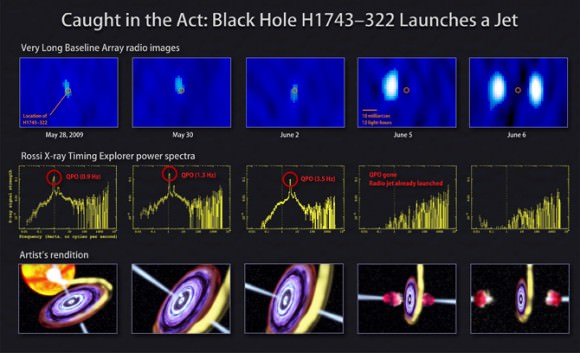
“This research provides new clues about the conditions needed to initiate a jet and can guide our thinking about how it happens,” said Chris Done, an astrophysicist at the University of Durham, England, who was not involved in the study.
These are just mini-ammo compared to what happens in the center of an active galaxy. They don’t just fire bullets – they blast off cannons. A massive black hole weighing in a millions to billions of times the mass of the Sun can shoot off its load across millions of light years!
“Black hole jets in binary star systems act as fast-forwarded versions of their galactic-scale cousins, giving us insights into how they work and how their enormous energy output can influence the growth of galaxies and clusters of galaxies,” said lead researcher James Miller-Jones at the International Center for Radio Astronomy Research at Curtin University in Perth, Australia.
Original Story Source: NASA News Feature.
Astronomers Complete the Puzzle of Black Hole Description
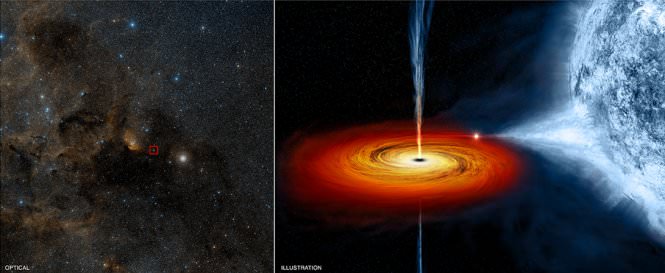
[/caption]
Light may not be able to escape a black hole, but now enough information has escaped one black hole’s clutches that astronomers have, for the first time, been able to provide a complete description of it. A team of astronomers from the Harvard-Smithsonian Center for Astrophysics (CfA) and San Diego State University have made the most accurate measurements ever of X-ray binary system Cygnus X-1, allowing them to unravel the longstanding mysteries of its black hole and to retrace its history since its birth around six million years ago.
Cygnus X-1, which consists of a black hole that is drawing material from its massive blue companion star, was found to be emitting powerful X-rays nearly half a century ago. Since its discovery in 1964, this galactic X-ray source has been intensely scrutinized with astronomers attempting to gain information about its mass and spin. But without an accurate measurement of its distance from the Earth, which has been estimated to be between 5,800 and 7,800 light-years, we could only imagine what secrets Cygnus X-1 was harboring.
Astronomer Mark Reid of CfA led his team to garner the most accurate measurement of the distance to Cygnus X-1 with the help of the National Science Foundation’s Very Long Baseline Array (VLBA), a continent-wide radio-telescope system. The team locked down a direct trigonometric measurement of 6,070 light-years.
“Because no other information can escape a black hole, knowing its mass, spin and electrical charge gives a complete description of it,” says Reid who is a co-author of three papers on Cygnus X-1, published in the Astrophysical Journal Letters (available here, here, and here). “The charge of this black hole is nearly zero, so measuring its mass and spin make our description complete.”
Using their new precise distance measurement along with the Chandra X-ray Observatory, the Rossi X-ray Timing Explorer, the Advanced Satellite for Cosmology and Astrophysics and visible-light observations made over more than two decades, the team pieced together the “No Hair” theorem – the complete description that Reid speaks of – by revealing a hefty mass of nearly 15 solar masses and a turbo spin speed of 800 revolutions per second. “We now know that Cygnus X-1 is one of the most massive stellar black holes in the Milky Way,” says Jerry Orosz of San Diego State University, also an author of the paper with Reid and Lijun Gou of the CfA. “It’s spinning as fast as any black hole we’ve ever seen.”
As an added bonus, observations using the VLBA back in 2009 and 2010 had also measured Cygnus X-1’s movement through the galaxy leading scientists to the conclusion that it is much too slow to have been produced by the explosion of a supernova and without evidence of a large “kick” at birth, astronomers believe that it may have resulted from the dark collapse of a progenitor star with a mass greater than about 100 times the mass of the Sun that got lost in a vigorous stellar wind. “There are suggestions that this black hole could have formed without a supernova explosion and our results support those suggestions,” says Reid.
It seems that with these measurements, Professor Stephen Hawking has well and truly had to eat his own words after placing a bet with fellow astrophysicist Kip Thorne, a professor of theoretical physics at the California Institute of Technology, that Cygnus X-1 did not contain a black hole.
“For forty years, Cygnus X-1 has been the iconic example of a black hole. However, despite Hawking’s concession, I have never been completely convinced that it really does contain a black hole – until now,” says Thorne. “The data and modeling in these three papers at last provide a completely definitive description of this binary system.”
Sources: CfA
Time-Lapse Movie Shows Massive Stars Form Similarly to Smaller Stars
It has been difficult for astronomers to see how massive stars form, since these stars are rare, form quickly and tend to be enshrouded in dense, dusty material which obscures them from view. But astronomers using the Very Long Baseline Array (VLBA) radio telescope were able to take images of the wavelengths of light emitted by a massive young star located 1,350 light years away in the Orion constellation. The created a ‘movie’ from the data, which they say shows the first evidence that young massive stars form from an accretion disk, just as smaller stars form.
“It is the first really ironclad confirmation that massive young stars are surrounded by orbiting accretion disks, and the first strong suggestion that these disks launch magnetically driven winds,” said Mark Krumholz, from the University of California at Santa Cruz.
The astronomers, led by Lynn D. Matthews from the Haystack Observatory at MIT, were able to see a disk of gas swirling close to the young massive star, known as Source I (said like “Source Eye”) in the high-resolution time-lapse movie they created.
By assembling 19 individual images of Source I taken by the VLBA at monthly intervals between March 2001 and December 2002, the high-resolution movie reveals thousands of masers, radio emitting gas clouds that can be thought of as naturally occurring lasers, located close to the massive star. According to Matthews, only three massive stars in the entire galaxy are known to have silicon monoxide masers. Because the silicon monoxide masers emit beams of intense radiation that can pierce the dusty material surrounding Source I, the scientists could probe the material close to the star and measure the motions of individual gas clumps.
Click here to see the time-lapse movie.
For almost 20 years, astronomers have known that low-mass stars form as a result of disk-mediated accretion, or from material formed from a structure rotating around a central body and driven by magnetic winds. But it had been impossible to confirm whether this was true for massive stars, which are eight to 100 times larger than low-mass stars. Without any hard data, theorists proposed many models for how massive stars might form, such as via collisions of smaller stars.
“This work should rule out many of them,” Krumholz said.
Because massive stars are believed to be responsible for creating most of the chemical elements in the universe that are critical for the formation of Earth-like planets and life, understanding how they form may help unravel mysteries about the origins of life.
The VLBA consists of a network of 10 radio telescope dishes located across North America, and can be thought of as a virtual telescope 5,000 miles in diameter. Used as a zoom lens to penetrate the dusty cloud surrounding the massive star, the VLBA captured images up to 1,000 times sharper than those previously obtained by other telescopes, including NASA’s Hubble Space Telescope.
The team’s paper was published in the Jan. 1 issue of the Astrophysical Journal.
Lead image caption: Artist’s conception of the rotating disk of hot, ionized gas surrounding Orion Source I, blocking the star from our view. A cool wind of gas is driven from the upper and lower surfaces of the disk and is sculpted into an hourglass shape by tangled magnetic field lines. Image: Bill Saxton, National Radio Astronomy Observatory/Associated Universities, Incorporated/National Science Foundation
Source: MIT


